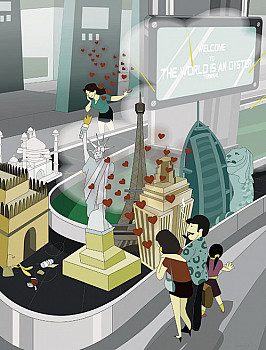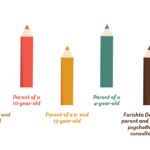Out Of India
It took a leisurely Sunday brunch conversation at Café Zoe, a new Manhattan-style eatery in South Mumbai – exposed brick, metal beams et al – to remind us of what makes an Indian Summer. For those without school-going children, vacations are all about nipping off to the next hotspot all year round. Children tend to make social lives non-existent and travel plans seasonal. In my time, childhood summer vacations expanded into long sunny and muggy days of reading, swimming, learning tennis; the lucky ones travelling to Disney World or coral sighting around the Reef, catching spring on one end and autumn on the other. Now, with the advent of the International Baccalaureate educational system (IB) – prudently adopted by the crème de la crème schools of the country – the concept of a summer vacation (matching the international breaks around June-July) if not travelling abroad, would be incredibly difficult days of watching the rain pelt away and probably kicking around some slimy mush.
No sensible parent would make the mistake of keeping the kids homebound during these difficult months. And so, as a matter of course, summer breaks have changed dramatically to be Riviera cruising or Tuscany villa-bathing. Indians and their little tots are quite in with the European jet set, hopping onto a chartered yacht for a soiree or catching a rave in Ibiza after the kids are snoozing. Not surprisingly, the IB system fits in beautifully with the LV-armed maternistas’ (mothers who are fashionistas or even simply, yummy mummies) idea of a chic vacation. The Far East is suitable for a quick turn during Easter, Europe and its many sophisticated charms make for a cultural rendezvous in the summer break, and Latin America and its mysterious Incas and Brazilian parades fit in quite neatly during Christmas and New Year.
The world is the child’s oyster and you may actually counter: for someone who must surely play a part in global politics of the future in some capacity, is it not important to start the education young? To that effect, it might just be ideal to switch Sunday brunches from chilli cheese dosa to whole-wheat apricot pancakes. From the local Udipi guy to Pali Village Café. Ironically, what we New Age Indians love about these new café hotspots is their intrinsic non-Indianness. You find yourself celebrating the escape from what is India into a safe haven of faux cobblestones, rustic interiors and Latino soundtracks. In any case, it is wise to alter their (the children’s) taste buds to suit the vacation spots, for most ease of use. After all, no self-respecting Burberry mum will allow for her child to demand dal-chawal in Marbella. Popularised by Zoya Akhtar’s 2011 film Zindagi Na Milegi Dobara, children look forward in tangy anticipation to the La Tomatina festival in Bunõl as a wonderful cultural experience to whet an appetite for a freshly stomped meal. It’s not surprising then, that there’s an unnatural buzz in the air about Starbucks finally coming to India this year and Australian coffee house Di Bella making its foray into desi turf. Does one actually expect those little Gucci shoes to prance into a genuinely unpainted local Iranian café when there is an option of a peppermint frappuccino in a Christmas-carol touting, chicly hand-painted coffee shop?
The kids are wonderfully globalised, with curios for their rooms from every part of the world, and possibly a cultural hangover which can be passed off as jet lag. It is unlikely that Mount Abu or Meenakshi fit into the grand scheme of things, unless it’s a part of a school field trip. India is exactly that – a field trip, quite like going to the zoo or bird sanctuary or a museum: to be looked at with wonder, noted for a history or sociology class. You turn away with the first roots of cynicism as you wonder why our monuments can’t be as nicely kept as the ones we see abroad. You come away with a sense of loss and a protective distaste for the sights and smells of the country that will possibly stay with you a lifetime. The same smells that writers of the diaspora sigh about dreamily form a noxious accent to the lives of those who live here. Would we want our children to grow up fondly reminiscing about the urea-scented trips to the Elephanta caves, when they could deliberate on the Mona Lisa’s mystical smile over a Parisian pain au chocolat?
As it turns out, India is merely an option – or more rightly, Indianness is merely an option. It’s like a home menu that reads: Thai Monday, Mexican Tuesday, Italian Wednesday, Indian Thursday and Hibachi grill Friday. It’s not just about the food; it’s about looking at an Indian life. Cosmopolitan India is about rapidly assimilating the lifestyle of the world and making the city more palatable. It is no longer the expats who crave a Chilean sea bass and hop across to their local gourmet restaurant. It is the Indian who craves something regularly non-Indian to make him stay sane in a city that exhausts him with its grey clouds of monotony. If you can’t live abroad, at least the proverbial ‘Chef’ Mohammed can bring ‘abroad’ to your neighbourhood. There may have been a time when Indians just wanted to be cool and try new things. Today, Indians want international flavour with a sense of permanence. Indianness is merely chutney on the Mediterranean focaccia: in turn, layered, dipped into, hidden or wiped away.
Maybe in spirit, a city-dweller is a restless species, an eternal traveller, one who is looking for escape from home before he returns home. Maybe we just need to slow down: the pace of the city – with our always-online work, rapid-fire social connections perpetually drain us, and we need to be recharged often if not sooner. Our children face it from the word ‘Go’ – with their language classes for six-month-olds, baby gyms for nine-month-olds, and birthday parties every alternate day. Maybe it is a genetic illness we are passing along in growing measures down generations – that we can’t quite stop planning the next getaway before the first break has ended. It keeps the adrenalin pumping, keeps up the excitement to land at Chhatrapati Shivaji International Airport (or your own desi equivalent) with a spring in your step, just brimming with the knowledge that soon you’ll be back here, taking off to another place of intrigue.
An acquaintance points out that her sister has spent five years in the coolest, hippest, buzziest city in the world – New York, and yet, can’t wait to get away occasionally. So maybe it is less that we tire of India and more that we tire in general. It’s just that when we do get weary, we look far away for solace – wine country, beaches of Croatia…. What’s wrong with a neatly reworked heritage place – think Neemrana – in the nostalgic Matheran of our own childhood to build the memories of our children’s youth? As the desis would say it – though I doubt they would be couture (kosher) – ‘Culture ka culture ho jayega, aur holiday ka holiday.’
Related posts from Verve:
Verve Trending
Sorry. No data so far.
us on Facebook to stay updated with the latest trends






